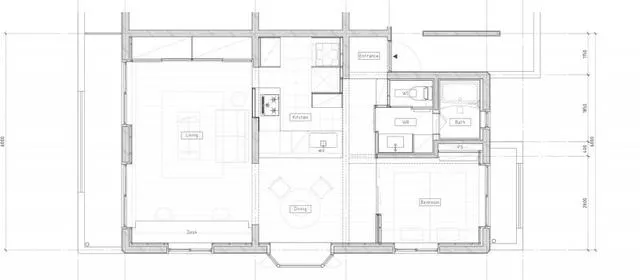該計畫是對位於日本東京市中心的一個面積約為 57 平方米的公寓單元進行改造。該單元很緊湊,但它是一個充滿陽光的轉角房間,面向一個大型植物園,盡管面積不大,但卻有可能營造出豐富的生活環境。
This project is a renovation of a condominium unit with an area of approximately 57 square meters located in central Tokyo, Japan.Although the unit is compact, it is a sun-filled corner room and faces a large botanical garden, offering the potential for a rich living environment despite its small size.
▼空間概覽,overview of the space ©Tomooki Kengaku
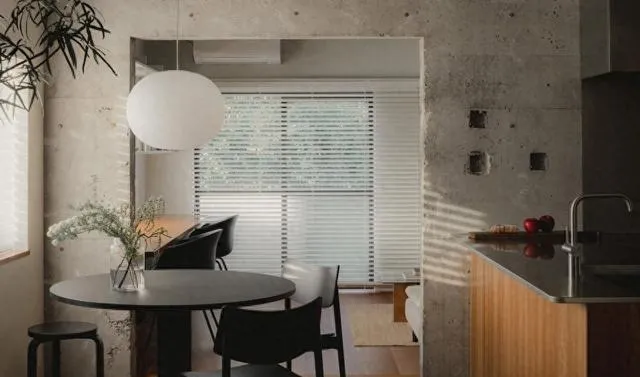
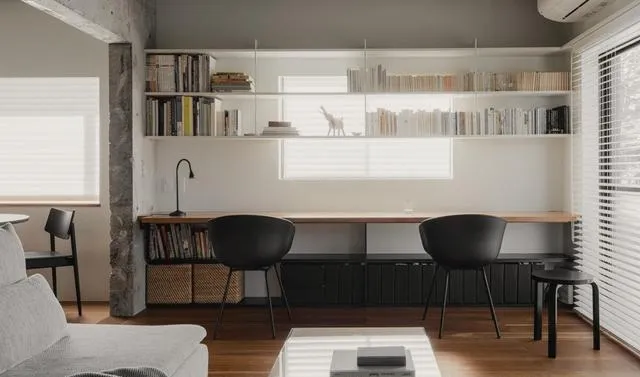
重構舊混凝土結構
Refining the old concrete structure
建築的混凝土結構已堅持50年之久。建築師拆除了所有舊的飾面材料,將原有的混凝土框架暴露出來。在該計畫中,設計的目的旨在形成與混凝土結構相輔相成的室內環境,新材料也可以完美的融入這一切。
This building is a 50-year-old concrete structure. We removed all the old finishing materials, exposing the concrete framework. In this project, we aimed for an interior design where the contrast and juxtaposition of the concrete structure and new materials beautifully blend together.
▼舊混凝土結構,old concrete structure ©Tomooki Kengaku
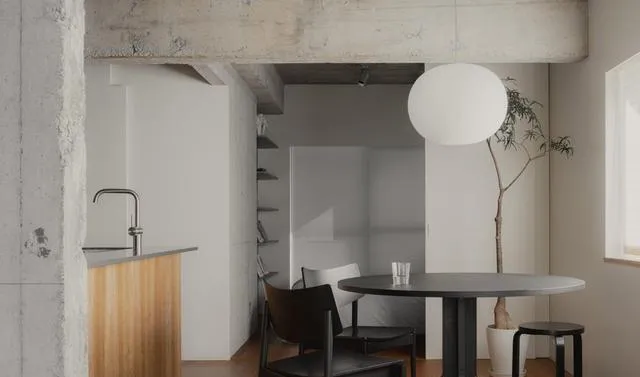
▼刻意暴露的混凝土框架,exposed concrete frame ©Tomooki Kengaku
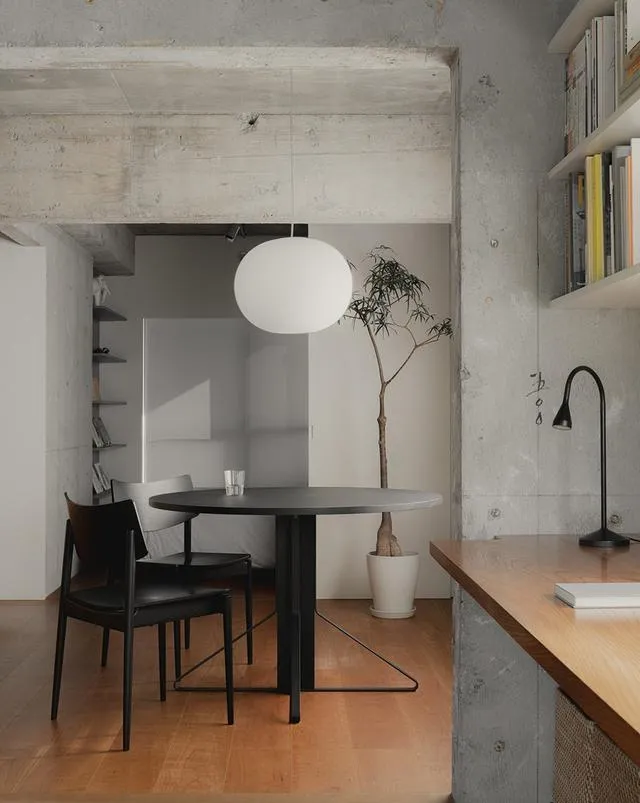
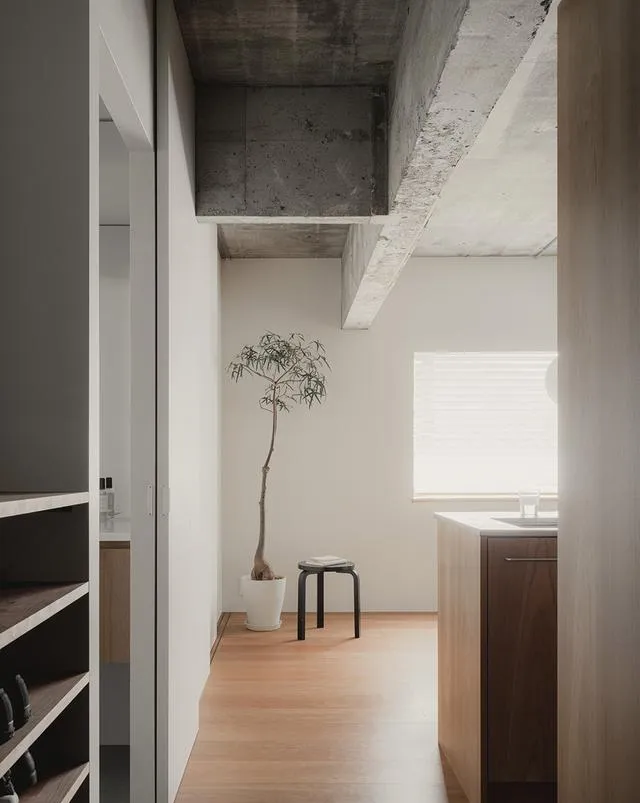
為緊湊空間中植入輕盈感與寬敞感
Giving
a
sense
of lightness and spaciousness to the compact residence
建築師根據家具和推拉門的主要位置布局了新平面,避免建造不必要的隔墻。該策略也為這個狹窄的住宅帶來一絲輕盈和寬敞。同樣,這也簡化並合理化了建造過程。
We have structured the plan primarily around furniture and sliding doors, avoiding creating unnecessary walls wherever possible.This strategy has imparted a sense of lightness and expansiveness to this small residence. Simultaneously, it has rationalized and simplified the construction process.
▼為緊湊空間中植入輕盈感與寬敞感,giving a sense of lightness and spaciousness to the compact residence ©Tomooki Kengaku
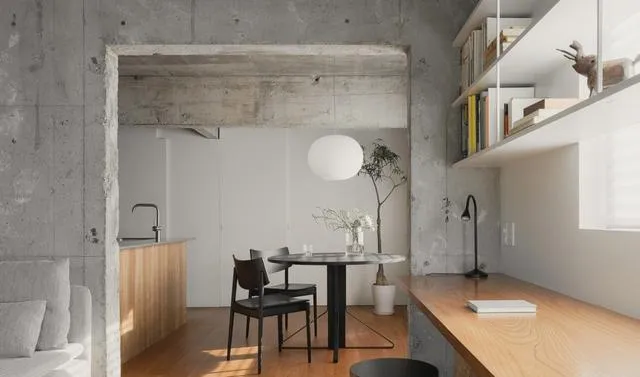
▼輕盈寬敞的客廳,light and spacious living room ©Tomooki Kengaku

▼輕盈寬敞的客廳局部,light and spacious living room ©Tomooki Kengaku
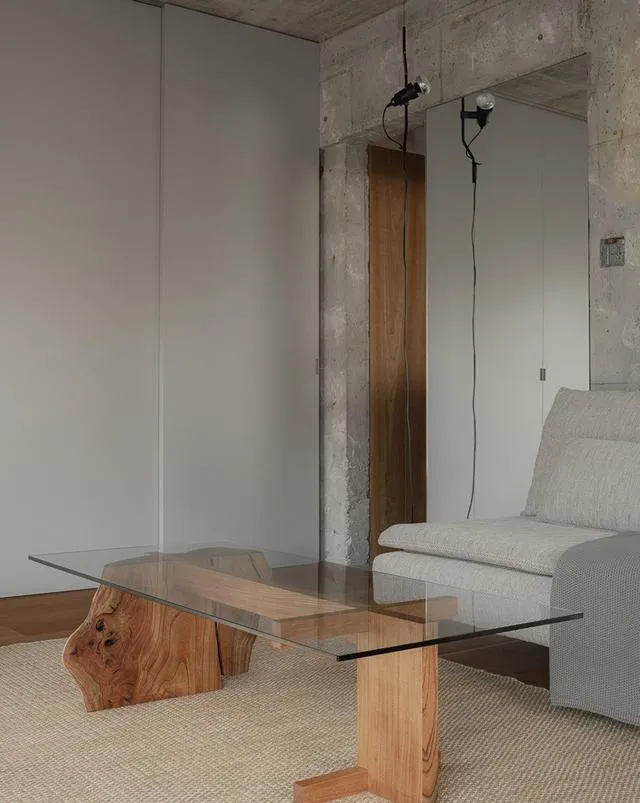
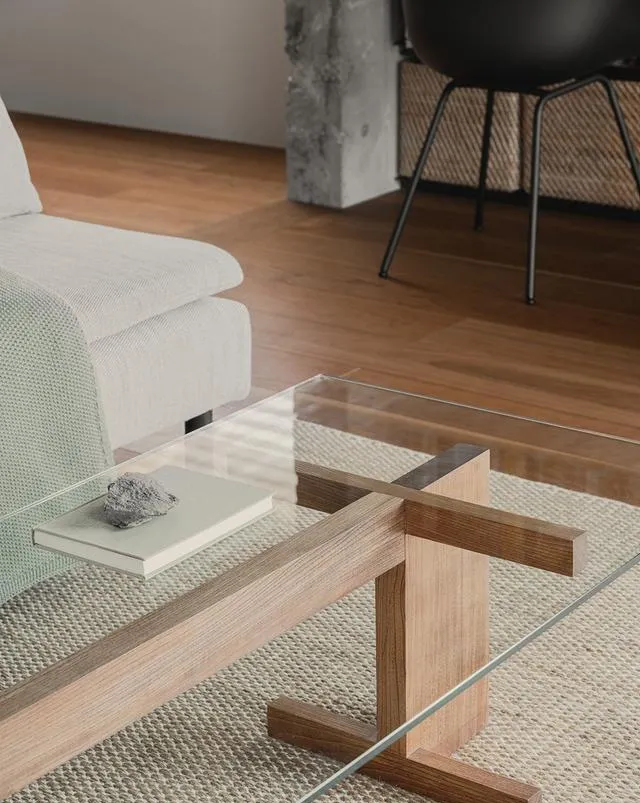
以廚房為核心的布局
Planning
around
the
kitchen
家中有一對夫婦和他們年幼的孩子們一同居住,廚房就成為了他們生活景象的核心。廚房被放置在這棟住宅的核心位置,因為當人站在廚房櫃台前時,他可以看到餐廳,書桌和臥室的情景。不僅如此,為了避免廚房的後部成為一個死胡同,也設計了一條通往客廳的走廊。具有流線的平面為小型住宅帶來寬闊感。
In this house where a couple and their small child live, the kitchen was at the center of their living image. The kitchen was placed at the center of the house so that when one stands at the kitchen counter, one can see into the dining room, desk space, and bedrooms.In addition, to avoid a dead end at the back of the kitchen, a path to the living room was provided. A plan with circulation flow provides a sense of expansiveness to a small residence.
▼以廚房為核心的布局,planning around the kitchen ©Tomooki Kengaku
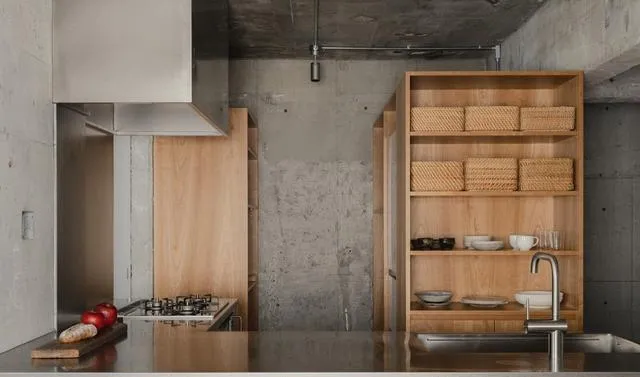
▼廚房空間,kitchen space ©Tomooki Kengaku
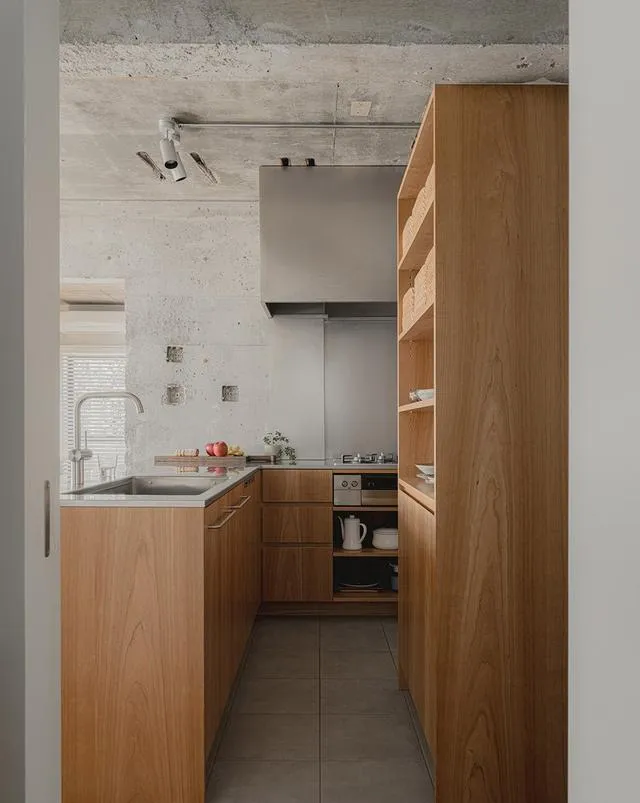
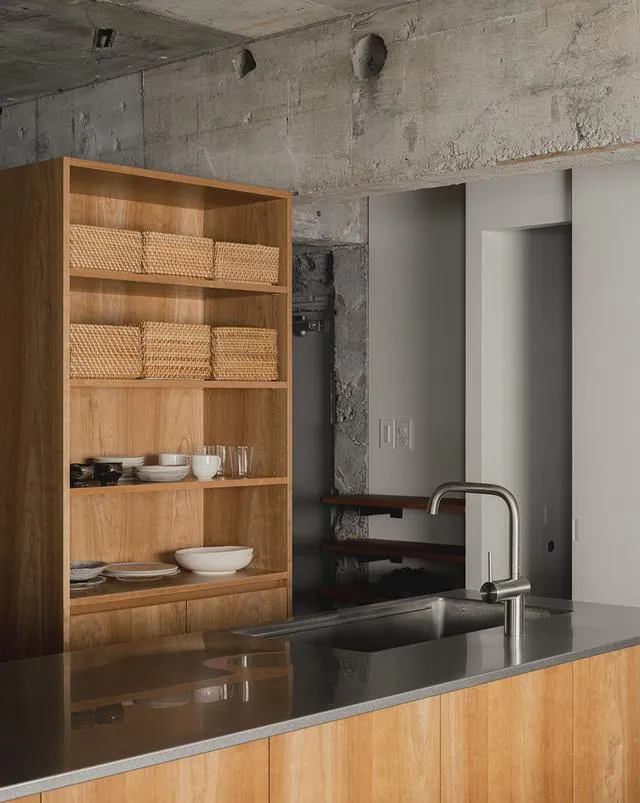

相輔相成
Contrast
and juxtaposition
當建築師選擇材料時,櫻桃木因其精細的紋理和舒適的觸感被選作主要材料,同樣它也創造了一種與50年前建造的粗糙混凝土框架之間的對比。
In the selection of materials, cherry wood, with its fine grain and pleasant texture, is used as the main material, with the intention of creating a contrast with the rough concrete frame that was made 50 years ago.
▼櫻桃木與混凝土形成鮮明對比,cherry wood creating a contrast with the rough concrete frame ©Tomooki Kengaku
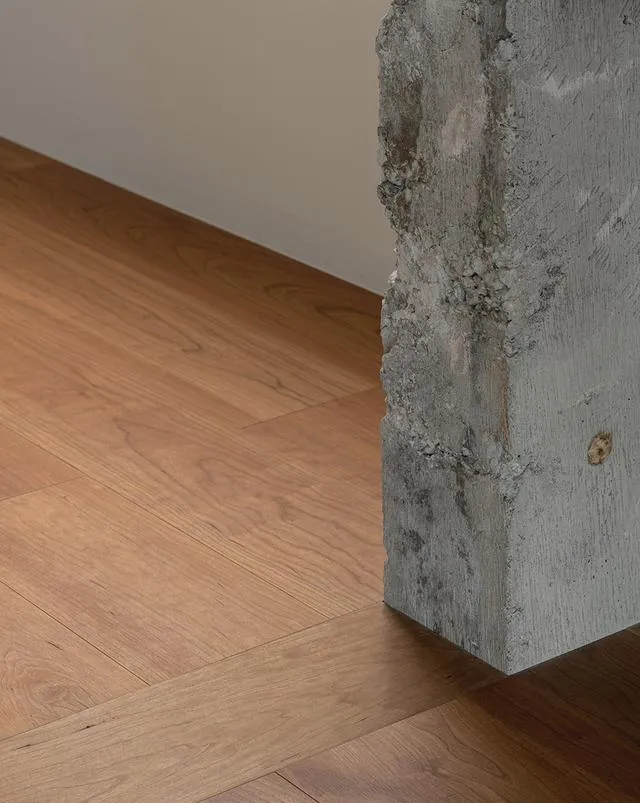
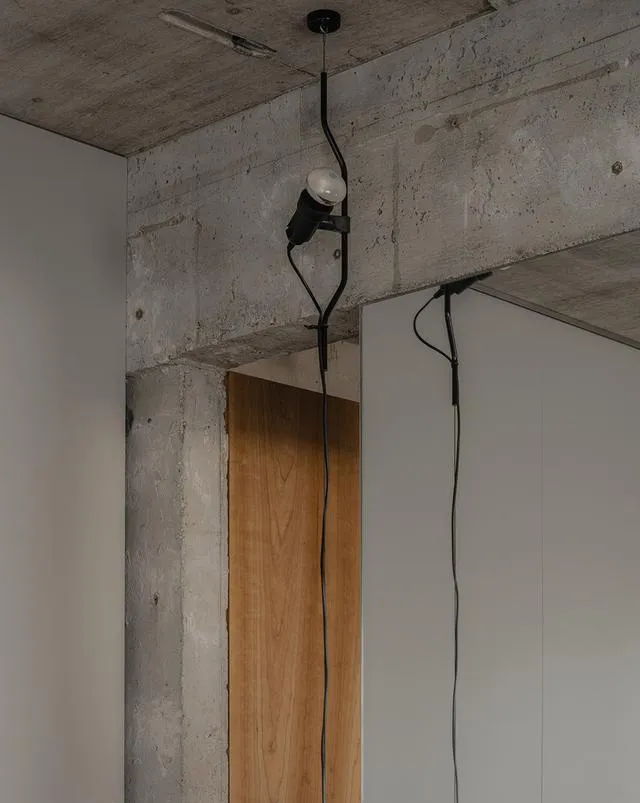
▼廚房後部的鏡面,mirror at the back of the kitchen ©Tomooki Kengaku
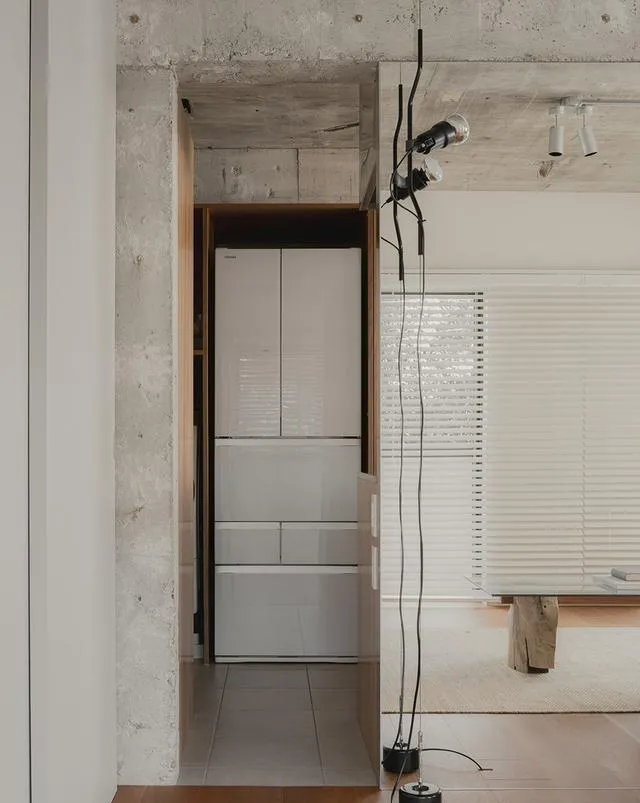
▼書房,study room ©Tomooki Kengaku
▼臥室,bedroom ©Tomooki Kengaku
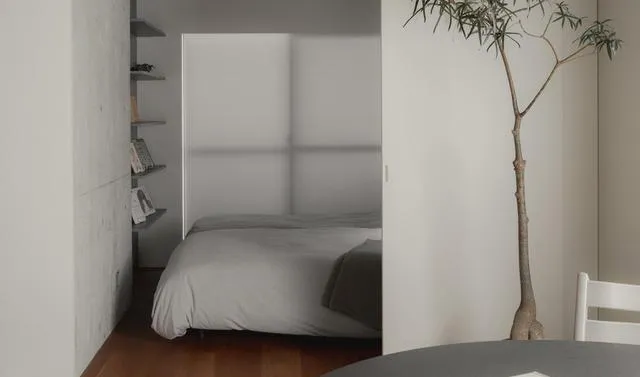
同樣,為了呼應窗前可見的櫸木林,建築師選用了櫸木作為長桌和咖啡桌的材料。用作咖啡桌的櫸木是從舊材料中回收而來並完成的設計。
Also, in correspondence with the zelkova forest visible through the windows, we used zelkova wood for the long desk and coffeetable. The zelkova wood used for the coffee tables was recycled from old materials to create the design.
▼面向櫸木林,facing the zelkova forest ©Tomooki Kengaku

在廚房後方放置了一面巨大的鏡面來降低其存在感。同時在視覺上增強縱深感,並將室外的綠色植物引入室內。
A large mirror is placed on the wall behind the kitchen to minimize its presence, visually enhance depth, and serve as a device tobring the outdoor greenery into the interior of the house.
▼平面圖,plan ©Kenta Hirayama Architect & Associates
